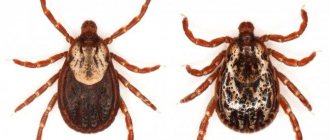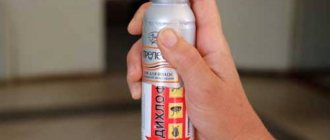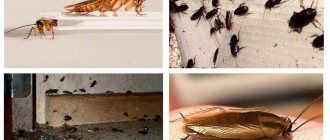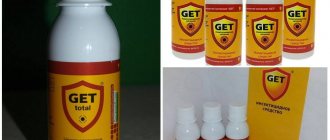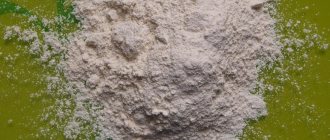Does Agran really help against cockroaches and is it able to effectively destroy insects?
Agran is a combined insecticidal product designed to destroy various synanthropic insects; it helps against cockroaches, bedbugs, ants, ticks, moths and many others. Agran contains two insecticidal components of different classes, so poisoning treatment can be effective even when pests are resistant to other poisons.
It is an insecticide combination of two active ingredients, chlorpyrifos and cypermethrin. The first belongs to the organophosphorus group, and the second to the synthetic pyrethroid. It is a broad-spectrum insecticide with contact and stomach action against insects. Its combination results in a synergistic effect that provides longer-lasting protection.
Method of action
- Chlorpyrifos affects the nervous system by inhibiting the breakdown of acetylcholine in nerve tissues. When insects are exposed, chlorpyrifos binds to the active site of the enzyme cholinesterase, which prevents the breakdown of acetylcholine in the synaptic cleft. High accumulation of acetylcholine causes overstimulation of nerve cells, ultimately leading to death.
- Chlorpyrifos shares a common mechanism of toxicity with other organophosphate insecticides such as malathion, so chlorpyrifos will not be effective against organophosphate-resistant insect populations.
- Cypermethrin is a complex non-systemic pyrethroid; non-cumulative broad-spectrum insecticide; and a fast-acting neurotoxin with good contact and toxic effects on the stomach. Cypermethrin acts as a stomach and contact insecticide.
Features of the drug
The drug Agran has specific properties that must be taken into account before dealing with it. For example, poison has a strong unpleasant odor that can linger for a long time in the treated apartment. For a long time, this smell will persist in mattresses, sofas, armchairs and other highly absorbent interior elements.
When handling this product, it is important to use personal protective equipment and carefully follow the instructions for use, as components of the product may cause poisoning if inhaled or swallowed.
Rules of application
Using Agran is easy, which is another advantage of the drug. To carry out the treatment, the concentrate is mixed with water at room temperature. Instructions for using Agran against bedbugs are available on each bottle; it indicates how to dilute the emulsion. The manufacturer recommends a ratio of 10 ml of product per 1 liter of water. The mixture is thoroughly mixed, after which it is ready for use.
Important!
The prepared solution cannot be stored, as it loses its properties over time. Therefore, it should be diluted immediately before processing.
Habitats of bedbugs in the house
The resulting mixture is poured into a container with a spray bottle and used for its intended purpose. Particular attention is paid to the favorite habitats of bedbugs in the apartment:
- internal structures of upholstered furniture;
- legs of a bed or sofa;
- skirting boards;
- various cracks and crevices where insects can enter;
- places under windows;
- doorways and window frames;
- the back of the furniture;
- ventilation holes.
The prepared solution is used at the rate of 50 ml per 1 sq. m area for hard surfaces, A double dose (100 ml) of insecticidal liquid will be needed for a soft, moisture-absorbing surface.
The treated room is left closed for 2-3 hours, waiting for the product to dry and take effect. After which it is thoroughly ventilated and wet cleaning is done only on those surfaces with which human contact is inevitable.
Composition and release forms
The insecticidal Agran contains two active ingredients:
Chlorpyrifos is the main component, the mass fraction of which in the preparation is 50%. It is an organophosphorus compound that has strong contact and intestinal effects on insects.
Cypermethrin - the composition of the drug is 5%. Its purpose is to enhance the effect of chlorpyrifos and provide an effect in cases where destroyed insects are resistant to the action of the first component. The insecticide cypermethrin in the composition of the drug is used as an auxiliary active ingredient.
Argan's auxiliary components include emulsifiers (8%) and hydrocarbon solvent (37%). By the way, in many respects it is an organic solvent, which provides a strong unpleasant odor from the concentrate and the finished aqueous solution. Meanwhile, many people unknowingly attribute this smell to the “deadly chemicals” used in Agran, although in fact the main components - chlorpyrifos and cypermethrin - do not have such a strong odor.
Agran is relatively cheap. The cost of a 50 ml bottle of emulsion concentrate is about 300 rubles, and the instructions indicate that this amount, with the necessary dilution with antibiotics, is enough to treat up to 100 m2 of surfaces in a room.
The product is also sold in large liter and five liter packages for professional pest control.
Bedbug treatment areas
Since bedbugs feed exclusively on blood and mainly at night, given the fact that they are inactive. We carry out processing around our resting place:
- Sofa or bed frames
- The back side of carpets, paintings, places where wallpaper does not fit tightly.
- Gaps in the floor and baseboards
- Bedside tables, chest of drawers. Back wall, bottom and pull-out shelves.
- Heating panels and spaces under window sills.
- Electrical appliances, sockets and switches - Disconnect power in advance.
- As a preventive measure, treat ventilation shafts and the front door frame so that bedbugs do not run from you to your neighbors and back.
After treatment, you should wait 5 - 7 hours (ideally, if possible, leave the premises for a day). Send your work clothes to the wash and take a shower yourself. Upon returning, ventilate the room well, wipe contact surfaces (door handles, tables, chairs) with a solution of soda and water (a teaspoon per glass of water). Carry out the cleaning after 2 - 3 days, the presence of corpses will show how effective the treatment was. The residual effect of the drug will destroy the newly hatched larvae.
The World Genetics Symposium is taking place. An American speaks: “We crossed a cow with a chicken - we get milk, meat and eggs at the same time!” A Frenchman speaks: “And we crossed a fly with a bee - it flies in the trash heaps, but gives honey!” A Russian speaks: “And we crossed a watermelon with cockroaches - when you cut it, the seeds spread out on their own!”
Instructions for using Agran against pests
Follow the instructions for use of the product exactly. This is important because all insecticides are toxic. Most of them can poison you if you violate safety rules. Of course, it's all a matter of dosage. I hope you will not chemically treat your home with Agran every day. Also, you will not intentionally allow the insecticide to come into contact with your eyes, mouth, or skin.
Of course, we are much larger than most of the insects we are trying to kill. The active ingredients are less dangerous to us, however, only use Agran in areas where your pests are most likely to come into contact, and your family members and pets are least likely to come into contact. Always read and follow all label directions carefully.
Rules for using Agran
First, let's define security. Safety is a combination of the toxicity of a particular compound and the degree of exposure of the non-target organism to it. For insecticides, chemists combine active and inert ingredients in an effort to create products with the lowest levels of toxicity, carcinogenicity (cancer-causing potential), and mutagenicity (inherent disorder).
But no matter how safe a modern insecticide is, there are countless products that have been used carelessly for years and are now believed to be linked to cancer and other diseases. Chlordane, once widely used to control termites, and DDT, once a very popular pesticide, are two examples. Manufacturers may have been completely honest with the public about the "safety" of their current products at the time of their use, but later discovered that there were unknown or unexpected negative results from exposure.
Therefore, there is no certainty that over time it will become clear that the components of Agran have become the cause of many diseases.
This means that you must control the effect of the insecticide not only on insects, but also on your loved one. Exposure may occur through inhalation, skin or eye contact, or ingestion. The toxicity level of a particular product does not matter as long as you or others have not been exposed to it.
Do not allow Agran to enter your body through the skin, lungs, eyes, or mouth. Dermal (skin) exposure is the most common form, so it is important to cover your skin and always wear gloves when using any insecticide. When applying insecticides, whether spray, powder or fumigation, your safety is increased by using things like:
- Long sleeves and trousers.
- Shoes and socks (not flip-flops).
- Chemical resistant gloves.
It would be a good idea to wear a respirator as well. Always carefully read the label instructions on the product you are using, not just the mixing instructions. This will most likely tell you that there should be no strangers or pets in the etching area.
Important words on labels indicate how toxic a product is:
“Caution” is the softest.
"Warning" is more dangerous.
“Hazard” is for products with maximum harmful effects.
However, there are no “safe” insecticides, although some are safer than others—boric acid is one example.
Some of the most toxic insecticides for indoor use are organophosphates. If you are concerned about toxicity, avoid products containing the following ingredients: phosmet, naledal, tetrachlorvinphos, diazinon, malathion, chlorpyrifos and dichlorvos.
Preparation for removing bedbugs, cockroaches and other insects
- Pay attention to where exactly you saw pests
First of all, make a list of all the places where you have seen pests hiding. Some pests (especially cockroaches) spend a lot of time in hiding, making them difficult to spot. If you have an ant infestation, it is also important to pay attention to where they have made their trails, as they are tiny and can spread quickly. A watch list makes the job easier and ensures that no area or infestation is left untreated.
- Clean the floor and vacuum the carpets
All hard floors and carpets should be thoroughly cleaned of visible pests and eggs. Use a good detergent on all hard surfaces. When vacuuming carpets, remember to clean out cracks using a special vacuum cleaner attachment. Once you are done cleaning and vacuuming, throw the used rag, mop and vacuum bag outside, away from the house, after sealing everything in a separate bag. Don't forget to wipe down the entire vacuum cleaner as well.
- Move furniture and large appliances away from the walls
You will need access to any area where pests have been observed. Even if you don't notice any pests around certain pieces of furniture or appliances, you still need to move them for cleaning. Move all your furniture and appliances away from the walls to clean behind and under each one. Once you're done cleaning, leave your larger items at a distance so you can access far corners for cleaning.
- Remove all products
Remove food items and store them in a safe place. Small appliances and kitchen utensils should also be removed and stored somewhere if you have the space. At a minimum, they should be completely covered before and for some time after applying insecticides.
- Cover cages and aquariums with sheets or towels
If you can, move your pets to a safe location. If this is not possible, then it is very important to cover the cages with large sheets or towels and keep your pet in his enclosure.
Precautionary measures
Before you begin, also evaluate the area you are going to treat. Do you have plants that may be affected or harmed by the treatment? Are there any pets that can be temporarily removed? Fish and other aquarium inhabitants are especially susceptible to insecticidal toxicity. Reptiles and birds are also generally at greater risk of insecticide poisoning than mammals.
Insecticides should be used indoors only as a last resort and as a complement to available non-chemical methods such as sanitation, stripping, and mechanical removal.
See instructions for indoor use. Make sure the pest you want to kill is listed. Read and follow label instructions carefully. Store Agran only in its original packaging out of the reach of children and pets.
Agran belongs to the group of residual insecticides and lasts for a long time. When the drug dries on the treated surface, forming an invisible layer, it retains its toxic activity. If bedbugs run over it, particles of the agent will stick to the legs and stomach of the insect, then the insecticides will penetrate through the chitinous cover into the soft tissues, then into the hemolymph and then into the nerve ganglia. Nymphs after such contact with dry insecticide usually die within 24 hours.
Rules for using Agran against bedbugs
Even before treating an apartment with Agran, it is necessary to calculate exactly how the bedbugs entered the room. If they came and continue to come from neighbors, you need to find the places through which they enter the apartment and seal them. These could be gaps in door frames, ventilation, joints of sewerage and heating pipes with concrete floors, gaps in floors and walls, and sockets.
It is also useful to read: Foresight against bedbugs
And one more thing: Where the hell did bedbugs come from in the apartment and what to do in such a situation
As long as such “corridors” remain open, even after the complete extermination of bedbugs in the apartment, new parasites will calmly creep in again as soon as the product wears off, and as a result, the handler may not even notice any special effect from its use.
On a note
In many cases, precisely because of the connection with infested premises, the impression arises that Agran does not work and is not able to destroy bedbugs - corresponding negative reviews appear. This, by the way, is also true for most other insecticidal agents, including very effective ones: the handler simply does not notice a pronounced effect, since new parasites enter the apartment almost immediately after the destruction of old ones, and plus, bedbug larvae gradually hatch from surviving eggs.
Therefore, blocking the entry routes of bedbugs into an apartment from neighboring infested premises is no less important than the correct use of Agran.
Before using the drug Agran indoors, it is necessary to clear the approaches to all walls and baseboards, to the back walls of cabinets, bedside tables, and mezzanines. Things are taken out of wardrobes and packed into plastic bags. If you plan to reprocess the kitchen, then dishes and food should also be hidden in bags or taken out of the apartment.
Mattresses and bed linen must be removed from the beds, and all items stored there must be removed from the interior shelves of the sofas.
Agran is diluted with tap water in the required concentration in a container of a suitable size, after which the finished solution is poured into a spray device. When processing it yourself, you can use, for example, a bottle of some household product with a spray nozzle (you can use a household sprayer used for spraying plants). A garden sprayer is even more effective, allowing you to reduce the time and effort spent on processing.
The treatment is carried out with the windows open (they should be closed after treatment).
The product is sprayed on walls, baseboards, carpets, upholstered furniture, mattresses, bedside tables and cabinets inside and out. If parquet is laid on the floor in a room, it should be processed completely; on laminate or linoleum, only the edges are processed. Bookshelves, carpets and paintings on the walls can also be treated. Found bedbug nests with accumulations of parasites and eggs are treated especially carefully.
After this, the room should be left and left to “infuse” for 3-4 hours. Then it is thoroughly wet cleaned and ventilated. If there is a strong smell of the product in the room, it is not recommended to stay there, much less spend the night.
On a note
If after a few days or even weeks small parasite larvae (nymphs) are found in the room, they are most likely hatched from eggs that were not destroyed during treatment. In this case, 15-20 days after the first treatment, it is important to re-treat the room. During this time, nymphs will hatch from all the eggs, and none of them will have time to reach adulthood and lay new eggs, and the product, upon repeated treatment, will destroy all the insects present in the room. If everything is done correctly, then the fight against bedbugs can be considered complete.

